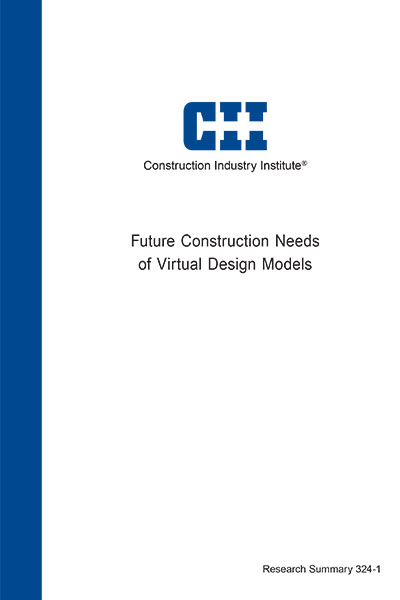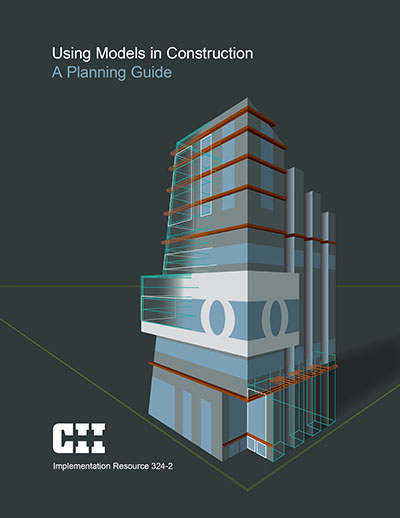
Future Construction Needs of Virtual Design Models
Publication No
RS324-1
Type
Research & Development Product
Publication Date
Nov 01, 2016
Pages
21
Research Team
RT-324
DOCUMENT DETAILS
Abstract
Key Findings
Filters & Tags
Abstract
To identify the breadth of construction needs for using virtual information models (referred to as “models”) throughout the project lifecycle, and to develop an approach to improve information accessibility to support construction.
First, the team determined a working list of construction needs for models through rigorous literature review and case study projects, and identified 29 model uses specific to supporting construction tasks. Next, the team sought to determine the current status of industry adoption for each of these uses, via a benchmarking survey and case studies of superior model implementation.
The RT-324 survey specifically sought to evaluate each model use in three ways: how difficult it was to use a model for the task; how valuable modeling was to the task; and, finally, whether modeling was already commonly adopted for this task. A broad industry audience responded to our survey. Two of the most significant findings from the survey were the following:
- Modular planning, analyzing design for safety, and automated ordering of materials were perceived as the most valuable model uses in construction that are feasible in the near future.
- The respondent’s perception of the most valuable model uses depended on that person’s role and industry sector, with respondents seeing more value in model uses directly associated with their roles.
All of the most valuable construction model uses identified in the benchmarking survey were observed in use on the case study projects. The case studies also offered two additional research findings: the importance of early planning by the entire project team, particularly on-site construction personnel, and the importance of a project champion who targets specific project goals that the model can support. These findings reinforced the importance of effective planning early in the project lifecycle, of the kind supported by our implementation resource.
Therefore, RT-324 developed Implementation Resource (IR) 324-2, Using Models in Construction: A Planning Guide, which supports rigorous planning of construction model uses, to be included as part of the project execution planning process. IR324-2 focuses on a four-step planning procedure:
- Modeling Goals: Clearly define the overarching goals for using models on the project.
- Model Uses: Identify the specific tasks that will leverage modeling content.
- Modeling Process: Plan the progression for how modeling content will develop from one activity to another. This process will clearly define the order and project team member(s) who will perform each task.
- Infrastructure: Determine the hardware, software, network, and other requirements for successful implementation.
Key Findings
Step 1: Define the overarching goals for using models
Step 2: Identify the model uses and methods for construction
Step 3: Plan the modeling process and information exchanges
Step 4: Determine the infrastructure and related requirements
Step 2: Identify the model uses and methods for construction
Step 3: Plan the modeling process and information exchanges
Step 4: Determine the infrastructure and related requirements
Filters & Tags
Knowledge Area
Project Phase
Project Function
Industry Group
Research Topic
Future Construction Needs of Virtual Design Models
Keywords
3D CAD,
BIM,
VDC,
information model,
automation,
visualization,
4D,
rt324



